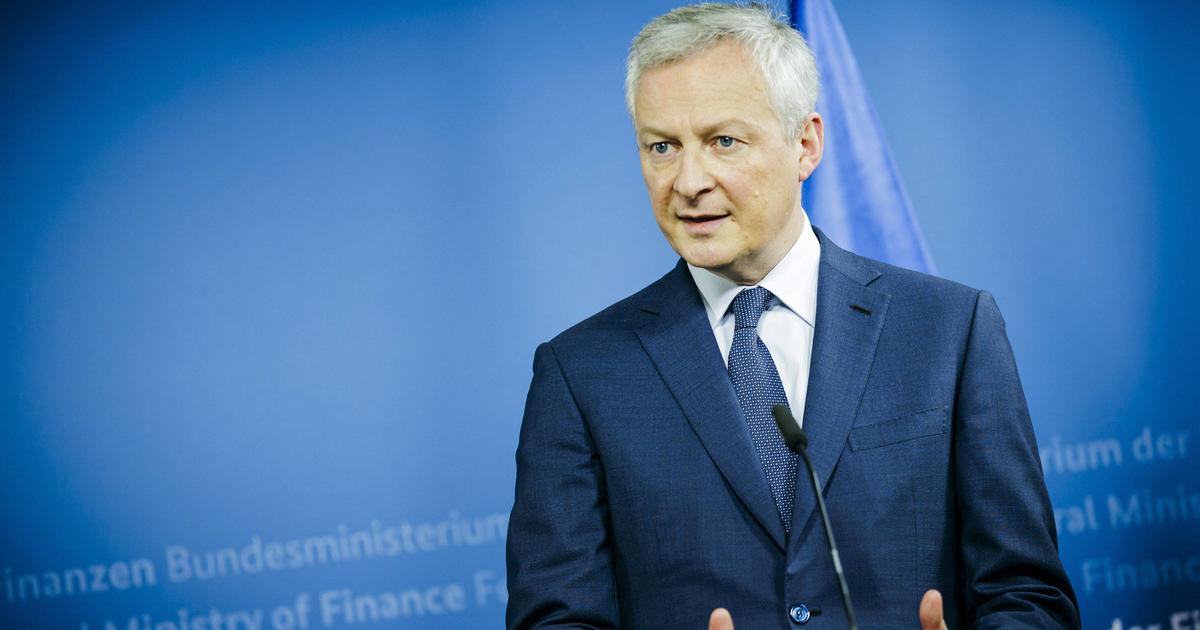After six months of stagnation, INSEE sees French growth coming out of its hibernation step by step.
“Overall, the horizon is brightening a little at the start of 2024
,” says Dorian Roucher, new head of the institute's economic department.
We are seeing a very moderate recovery
.
»
INSEE therefore expects gross domestic product (GDP) to grow by 0.2% in both the first and second quarters.
At this modest rate, the growth achievement at the end of the first half of the year, that is to say the growth for the whole of 2024 if activity did not change by more than one iota from June to December , would be 0.5%.
Suffice to say that the government hypothesis set in the 2024 budget, voted in December, of growth of around 1.4% no longer holds water.
To achieve this objective, taking into account the forecasts for the first half, activity should increase by 1.2% in the third, then in the fourth quarter.
A challenge that no economic forecaster believes in.
In its latest forecasts, dating from the beginning of the week, the OECD expected annual growth of only 0.6% for France, down 0.2 points compared to its November projections, and 0. 6 points compared to those of September.
The Banque de France, for its part, is aiming for an increase in activity of 0.9% this year.
A painful exercise
At Bercy, everyone is well aware that there is an urgent need to revise the macroeconomic framework.
The ministry's economists, at the Treasury, have already run their spreadsheets, and the announcement of the new growth objective is expected in the coming days, ideally next week if the planets are aligned with Matignon and the Élysée.
Read alsoThe “budget tour of France”, the grassroots offensive of the majority’s elected representatives
This is not just the vanity of economists.
This revised growth figure will result in a severe rereading of the budgetary trajectory.
The exercise looks painful.
Initially, in order to maintain its deficit objective at 4.4% of GDP, the executive had to make 12 billion in savings, which still remained to be identified.
A lower level of GDP will mechanically increase the pressure on public spending, placing the government before an impossible alternative: giving up on maintaining its public finance trajectory and risking the deterioration of its debt or passing tough reforms which could fuel protests in the country. Street.
Only a surprise burst of activity would loosen the grip of the executive.
Unfortunately, the economy's ability to rebound seems very modest.
Growth in the first half of the year would indeed rely on the solid but restrained engine of the return of consumption.
It
“would benefit from gains in purchasing power in the first half thanks to the drop in inflation, particularly concerning food products and thanks to the dynamics of wages and social benefits, revalued on past inflation”,
write the economists of INSEE.
After 3.1% in January, the price rise should continue to slow down.
In June, it is expected to be around 2.5%.
A heterogeneous landscape
On this horizon, it would be
“the prices of services, driven by wage dynamics”,
which would primarily support inflation.
Conversely, food prices would begin to stabilize.
Price increases for this segment would stand at 1.5% in June, compared to 5.7% in January, after a peak of around 16% in spring 2023. INSEE expects a stable savings rate, around by 17%.
“A more rapid decline in the savings rate would support growth,”
recognized Dorian Roucher.
But, in the current context, nothing really suggests, at least for the moment, such a surge of confidence.
Read alsoThe insolent growth of Mirakl, the French marketplace champion
On the business side, the landscape appears surprisingly heterogeneous at the start of the year.
Thus the industry, where the branches traditionally evolve in concert due to their interdependencies, is moving forward at the start of the year in a dispersed order.
The business climate is favorable in transport equipment, but has deteriorated significantly in the food industry, due to the drop in consumption.
This disparity conveys the image of a hesitant economic situation, with a still fragile rebound.
However, one anomaly seems to be resolved at the start of the year.
The employment climate, which was hovering well above that of business, is gradually returning to the same level.
The rapid increase in rates over the past eighteen months continues to weigh on investment and partly explains the increase in business insolvencies.
It is of course real estate and construction which are suffering the most from the tightening of financing conditions.
Household property purchases, already down 1.4% year-on-year in the fourth quarter, are expected to continue to deteriorate.
Only a relaxation of key rates by the European Central Bank (ECB), which is not expected before the spring, would make it possible to revive investment.

